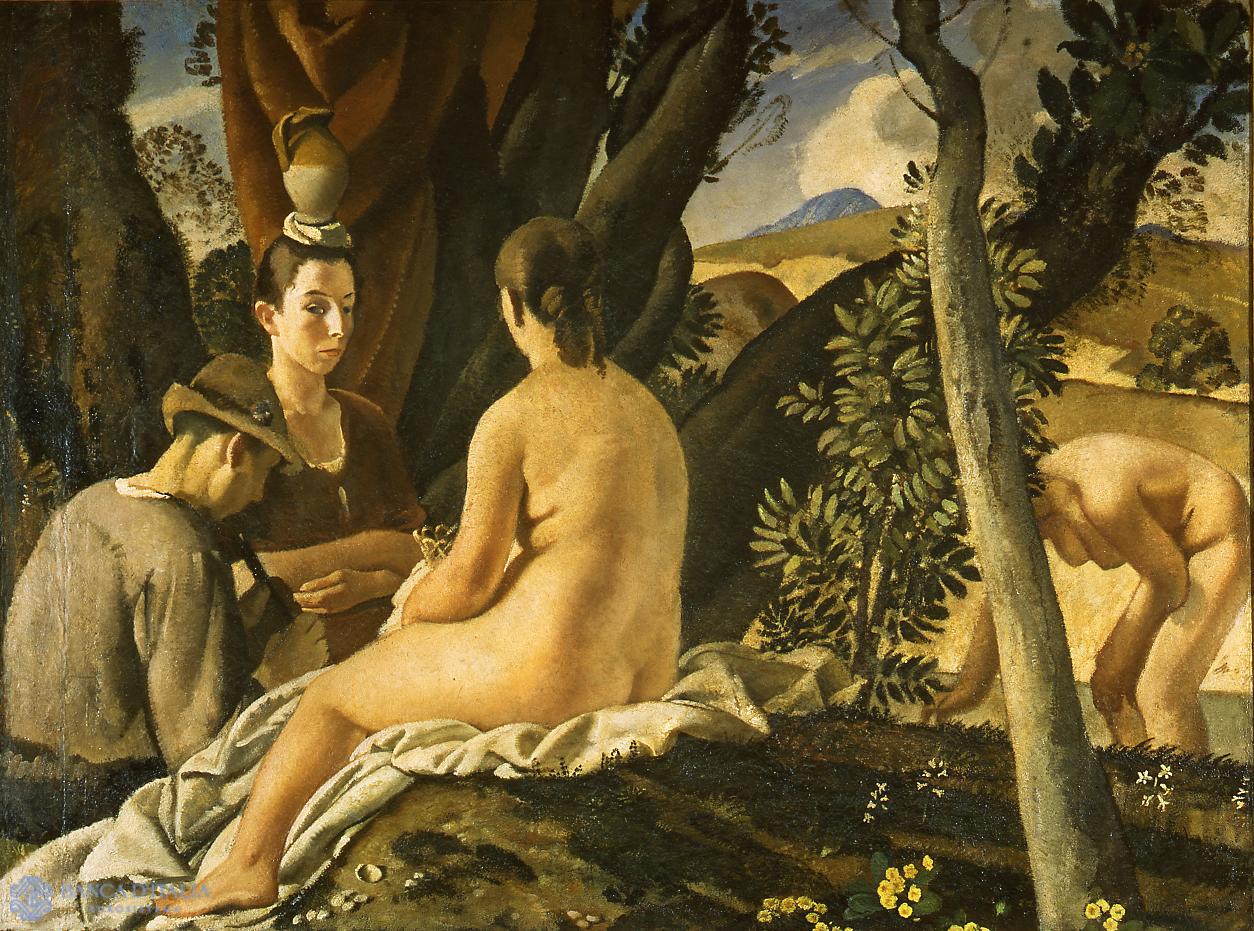At the 1922 Venice Biennale Gualino was captivated by a large painting, La quiete (‘Tranquillity’) by the Turinese painter, Felice Carena, which was not for sale.
Driven by admiration for what is probably the artist’s masterpiece, Gualino asked him to paint a second version for his collection, the one now on display in Palazzo Koch. In Carena’s painting Gualino perceived the spirit of the ‘return to order’ that was rapidly gaining ground throughout Europe after the collapse of avant-garde experimentation. La quiete is a large canvas. The scene takes place in a wood, where a flute-player sits beside a woman carrying a pitcher on her head. Two nude female figures are present, one in the foreground, seen from the back, the other bathing, half hidden by the trees. The two bathers are a reference, partly iconographical, to the various representations of Bacchanalia and Renaissance revels, from Bellini to Giorgione and Titian.
The clear, well-spaced structure has a solemnity that seems to evoke, through the enigmatic expression of the canephora, the sacred nature of ancient rites linked to the land. The painting conveys an earnest impression of renewed classicism as if it were a deliberate choice, almost the manifesto of the new modern style. This is borne out by the measured resonance of the colour, shifting between the pale tones of the female bodies and the dark tree trunks intertwined behind them. In the clear lay-out of space, the planes reach out to a distant but well-balanced horizon. Is this a country ritual we are observing? The dignified bearing of the figures, the rigorous control of luxuriant nature, the finely drawn leaves on the trees, the almost abstract plasticity of the tree trunks and the flowers gracefully scattered in the grass would seem to indicate this is so.
Felice Carena, La quiete
La quiete
20th century AD
Painting
Figurative

Artist
Date
1922 - 1924 ca.
Material and technique
Oil on canvas
Measurements
152 x 203 cm
Compiler
Augusta Monferini
